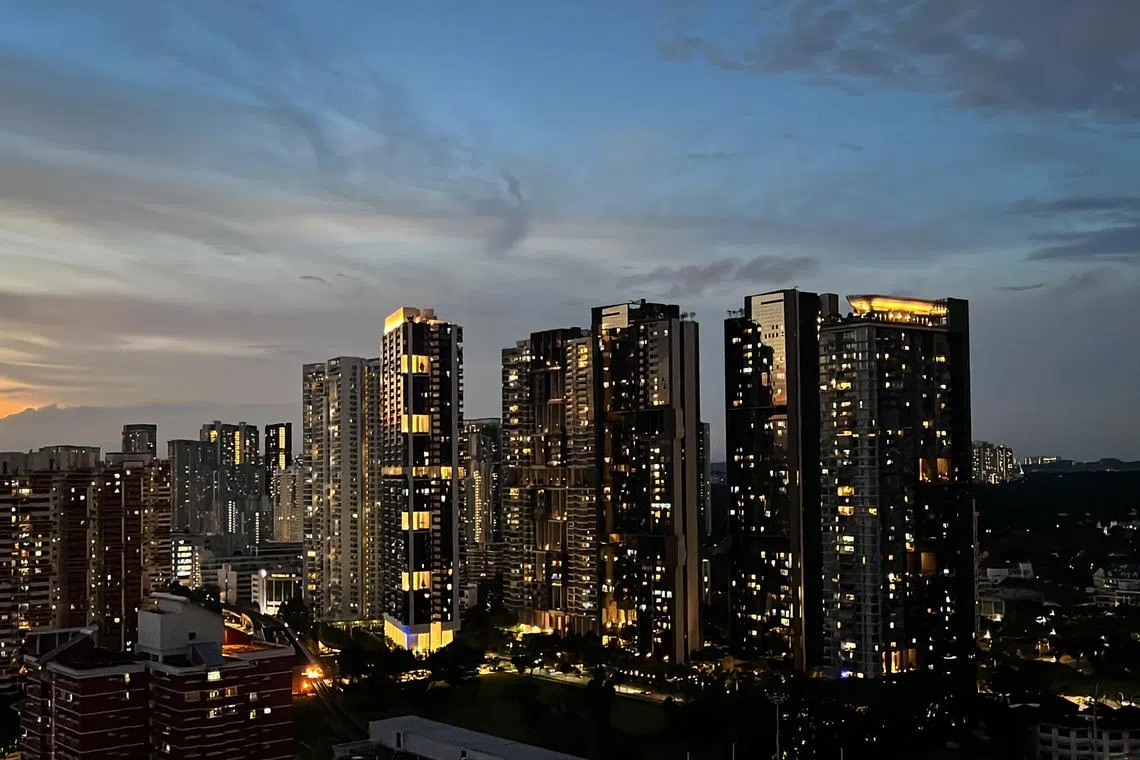S’pore plans to upgrade electricity grid amid rising energy demand, increasing use of renewables
Sign up now: Get ST's newsletters delivered to your inbox

EMA believes it is time to review the “design and planning” of the electricity grid infrastructure amid changing energy trends.
PHOTO: ST FILE
Follow topic:
SINGAPORE - Singapore is planning to upgrade its electrical grid to not just support its transition to greener energy, but also to cope with rising demand driven by economic growth, digitalisation and the increasing use of electric vehicles.
The Energy Market Authority (EMA) said in a tender which closed in November that it wants to hire a consultant to review and potentially upgrade various aspects of the electrical grid. This includes studying the feasibility of higher transmission voltage levels from power generation plants to increase efficiency, its spokesman told The Straits Times.
Higher voltage levels are crucial for transmitting electricity over longer distances, for instance when importing electricity from neighbouring countries like Malaysia. Industries which use a lot of energy, such as the metals and petrochemicals sectors, also require electricity at high voltages.
EMA is also looking to increase the coverage of the low electricity voltage network, which usually caters to households and smaller businesses.
This would reduce the need for substations, which convert electricity from high to low voltages, in residential neighbourhoods, said its spokesman.
Explaining that “a significant portion” of the electricity network infrastructure had been built and commissioned in the 1980s to early 2000s to support urban development and industrialisation, the agency told ST that it believes it is time to review the “design and planning” of the electricity grid infrastructure amid changing energy trends.
With plans to increase the amount of low-carbon electricity imports to 4 gigawatts by 2035
Singapore has a number of trials under way to import electricity from neighbouring countries.
On Jan 30, it was announced that Singapore will import 100 megawatts (MW) of electricity from Malaysia
Singapore began importing hydropower from Laos in 2022,
Singapore also has plans to install 60,000 electric vehicle charging points
Doing this at all voltage levels will maintain the network’s reliability and minimise costs and keep electricity affordable, said the EMA spokesman.
Professor Dong Zhao Yang, from Nanyang Technological University’s School of Electrical and Electronic Engineering, said that extending the coverage of the low voltage electricity network would mean more capacity to supply households and small businesses. At the same time, those who own rooftop solar panels, for example, could also sell back excess electricity to the grid.
This would enhance the grid’s ability to host more distributed energy resources, which include solar panel systems, electric vehicle chargers, and energy storage systems – which are essentially batteries that store excess solar power for use during periods of high demand.
The Republic last week announced the official opening of Singapore’s first energy storage facility,
EMA had said in its tender that it is also seeking to explore a cost-effective way of connecting various distributed energy resources to the grid.
Explaining why this is important, Dr David Broadstock, a senior research fellow at the National University of Singapore’s Energy Studies Institute, gave the example of certain types of electric vehicle charging equipment which are powered using solar panels and batteries that can store the extra solar power until it is needed. When the battery is full and there is excess solar power, the extra energy may end up wasted unless the system is connected to the grid.
When managed through intelligent monitoring systems, this could ensure that the excess power is better utilised.
“This would require deep awareness of real-time energy supply and demand patterns across all of the connected users of the system,” he added.
Correction note: This article has been edited for clarity.


